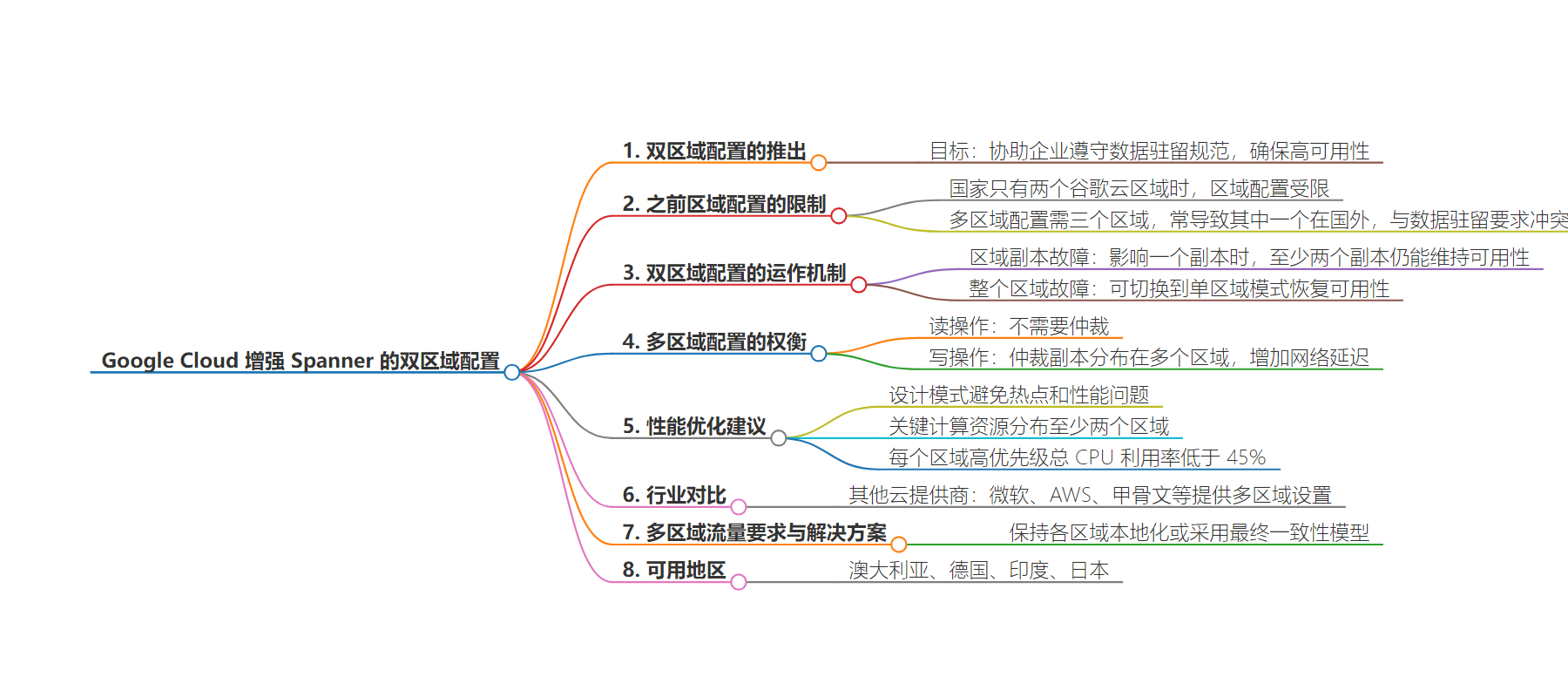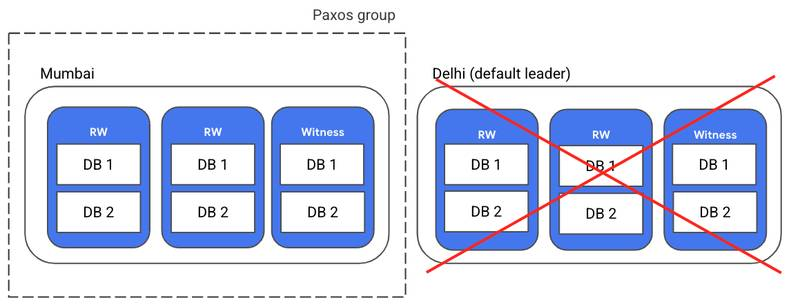包阅导读总结
1.
关键词:Google Cloud、Spanner、Dual-Region、Data Residency、High Availability
2.
总结:Google Cloud 为其分布式 SQL 数据库服务 Spanner 推出双区域配置,旨在帮助企业合规并确保高可用性。此前存在区域限制,新配置解决了问题,同时介绍了其运作机制和性能优化建议,且该服务已在部分国家可用。
3.
主要内容:
– Google Cloud 增强 Spanner 推出双区域配置选项
– 目的是协助企业遵守数据驻留规范,确保高可用性
– 此前企业在特定国家受区域配置限制
– 多区域配置需三个区域,常与数据驻留要求冲突
– 新双区域配置解决了此问题
– Nitin Sagar 详述双区域配置运作机制
– 一个区域副本故障时仍能维持可用性,整个区域故障会失去可用性,可切换单区域模式恢复
– 多区域配置存在权衡
– 读写副本分布跨区域会有网络延迟,读无需仲裁
– 公司建议优化设计和资源分布以提升性能
– 其他云提供商和数据库供应商也提供类似多区域能力
– 谷歌新双区域配置已在澳大利亚、德国、印度和日本可用
思维导图:
文章来源:infoq.com
作者:Steef-Jan Wiggers
发布时间:2024/8/1 0:00
语言:英文
总字数:435字
预计阅读时间:2分钟
评分:89分
标签:Google Cloud,Spanner,双区域配置,数据驻留,高可用性
以下为原文内容
本内容来源于用户推荐转载,旨在分享知识与观点,如有侵权请联系删除 联系邮箱 media@ilingban.com
Google Cloud has introduced a significant update to its fully-managed distributed SQL database service, Spanner, which now offers a dual-region configuration option. The company aims with this enhancement to assist enterprises in complying with data residency norms across countries with limited cloud support while ensuring high availability.
Before this update, enterprises operating in countries with only two Google Cloud regions were constrained using regional Spanner configurations. Multi-region configurations required three regions, often resulting in one region being outside the country, thereby conflicting with data residency requirements. The new dual-region configuration alleviates this issue by allowing enterprises to maintain data residency compliance and high availability even with just two cloud regions within a country.
Nitin Sagar, senior product manager at Google, detailed the operational mechanics of the dual-region configuration in a blog post. He explained that during a zonal outage affecting one of the replicas, Spanner can maintain availability as at least two replicas in each region would still be functional. However, the databases will lose availability if an entire region faces an outage. In such cases, the setup can switch to single-region mode, comprising three replicas in one region, to recover availability.

(Source: Google blog post)
The documentation states with multi-region configurations:
There are trade-offs, though, because in a multi-region configuration, the quorum (read-write) replicas are spread across more than one region. You might notice additional network latency when these replicas communicate with each other to form a write quorum. Reads don’t require a quorum. The result is that your application achieves faster reads in more places at the cost of a small increase in write latency.
The company suggests designing a schema to prevent hotspots and performance issues. To avoid single-region dependency and optimize performance in multi-region configurations, critical compute resources should be distributed across at least two regions. Additionally, keep high-priority total CPU utilization under 45% in each region to improve performance.
Google Cloud is not the only one offering such capabilities. Other cloud providers like Microsoft, AWS, and Oracle, also provide multi-region setups for their database-as-a-service (DBaaS) offerings, such as Azure SQL, Cosmos DB, Amazon Aurora, Amazon DynamoDB, and Oracle NoSQL database. Furthermore, other database vendors like Cockroach Labs and DataStax offer similar multi-region capabilities.
When it comes to multi-region traffic requirements and a Cloud DBaaS solution, a respondent on a recent Reddit thread wrote:
You’ll either need to keep things local to each region as it makes sense or move the architecture to an eventually consistent model using the various tools and techniques available for that.
Lastly, Google Cloud’s new dual-region configurations are now available in Australia, Germany, India, and Japan.
